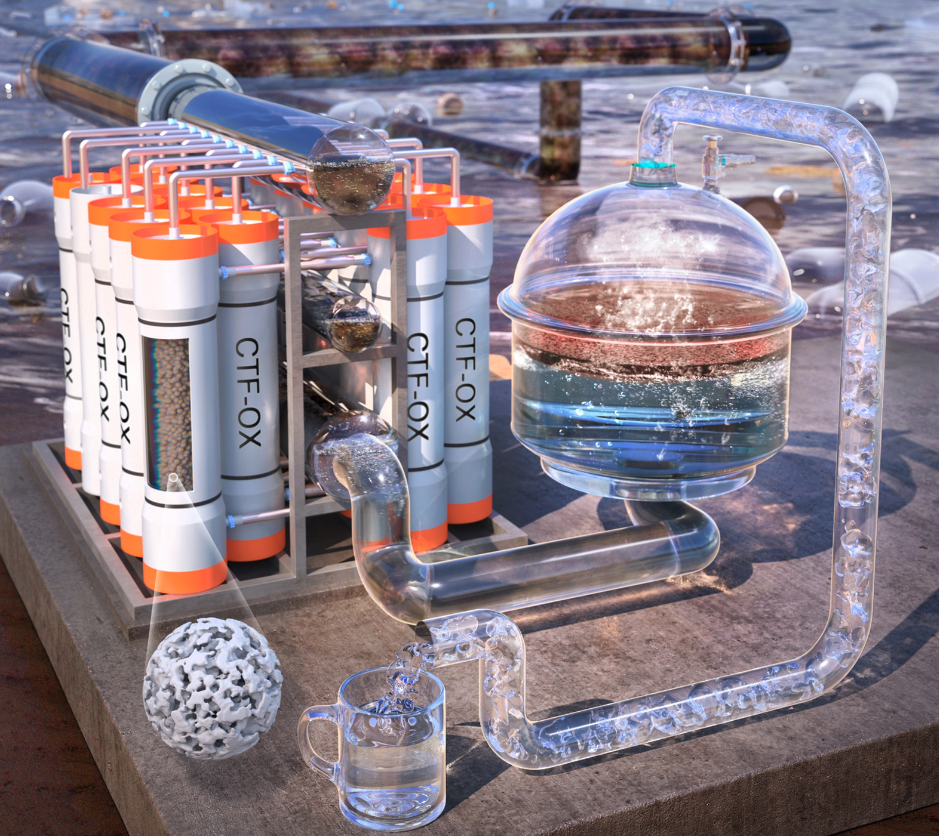Microplastics are a growing environmental problem, but now researchers in Korea have developed a new water purification system that can filter out these tiny fragments, as well as other pollutants, very quickly and with high efficiency.
Given the ubiquity of plastic in the modern world, it’s not surprising that tiny flakes of the stuff can be found basically everywhere on Earth, even in environments thought to be pristine. Microplastics have been detected from pole to pole, from the deepest ocean trenches to the tallest mountain peaks, and are making their way up the food chain all the way to humans.
Various materials are being tested to help filter out microplastics, including magnetic "nanopillars," nanocellulose, semiconductor wires, and filtration columns containing sand, gravel and biofilms. Now, researchers at Daegu Gyeongbuk Institute of Science and Technology (DGIST) in South Korea have found promise with a new design.
The key is a material known as a covalent triazene framework (CTF). This is a highly porous material with a large surface area, meaning they have plenty of room inside to store molecules they capture. Similar materials have recently been demonstrated to be effective at removing organic dyes from industrial wastewater.
The team carefully designed the molecules in the CTF to be more water-attracting, and exposed the material to mild oxidation. The resulting filter was shown to be effective at very quickly removing microplastics from water – reportedly over 99.9% of the pollutants were removed within 10 seconds. The material can also be reused multiple times without reducing its performance.

In another test, the researchers developed a version of the polymer that can absorb sunlight, convert the energy into heat and use that to purify another pollutant, known as volatile organic compounds (VOCs). This was able to remove over 98% of VOCs under the power of one Sun irradiation. A prototype combining both types of membranes was able to remove over 99.9% of both types of pollutants.
“The technology we developed here is an unrivaled water purification technology with the world's highest purification efficiency, removing more than 99.9% of phenolic microplastics and VOC contaminants in water at ultra-high speeds,” said Professor Park Chi-Young, lead author of the study. “We expected that it will be a universal technology with high economic efficiency that can purify contaminated water and supply drinking water even in areas where there is no power supply.”
The research was published in the journal Advanced Materials.
Source: DGIST via Asia Research News





